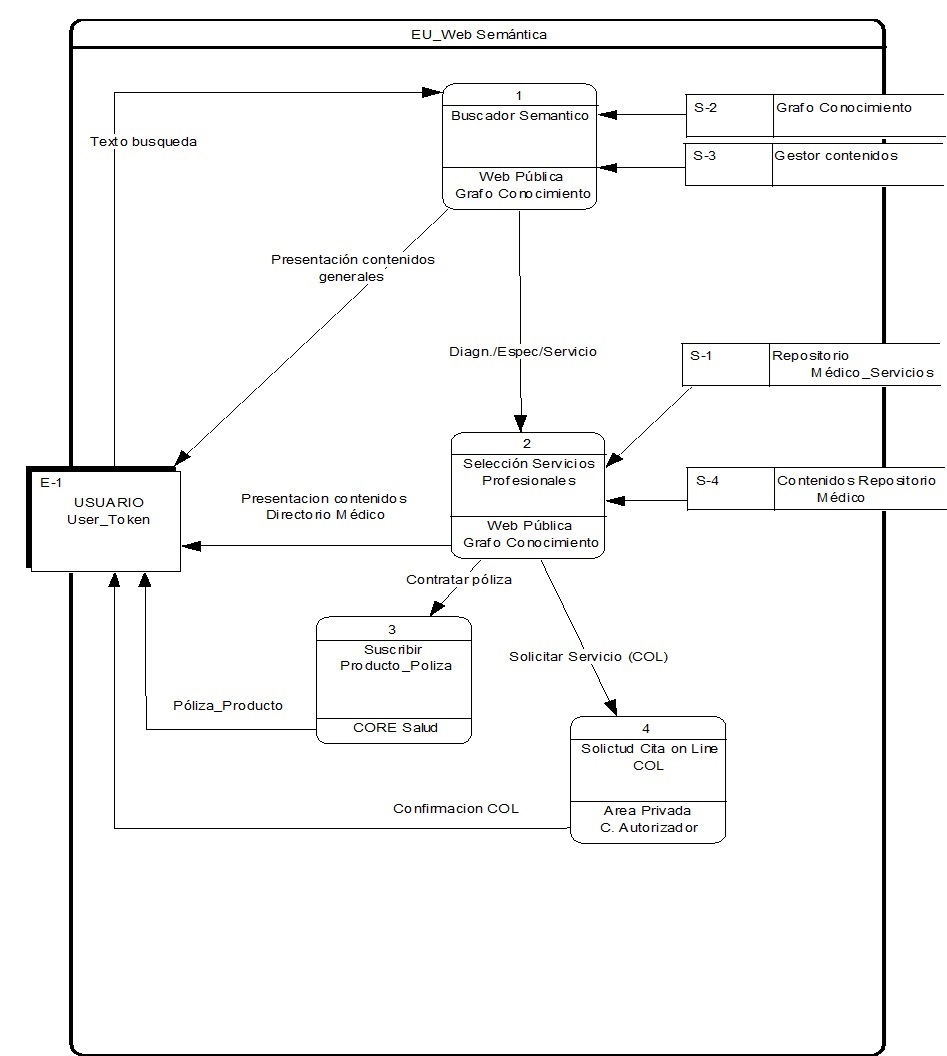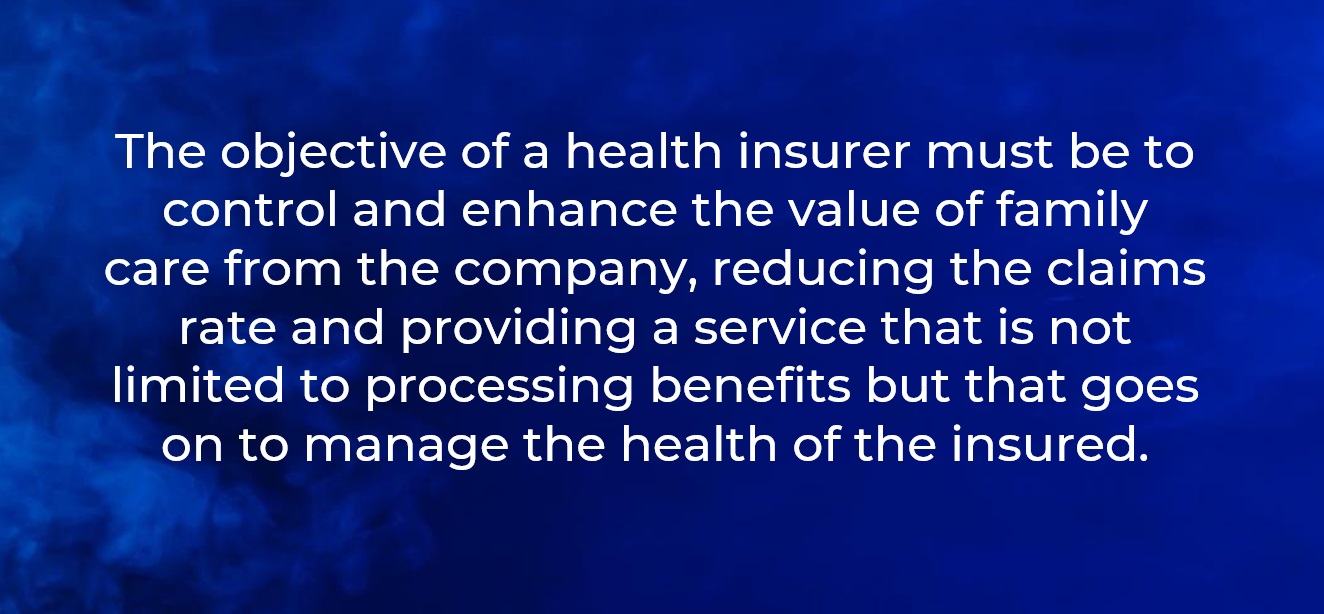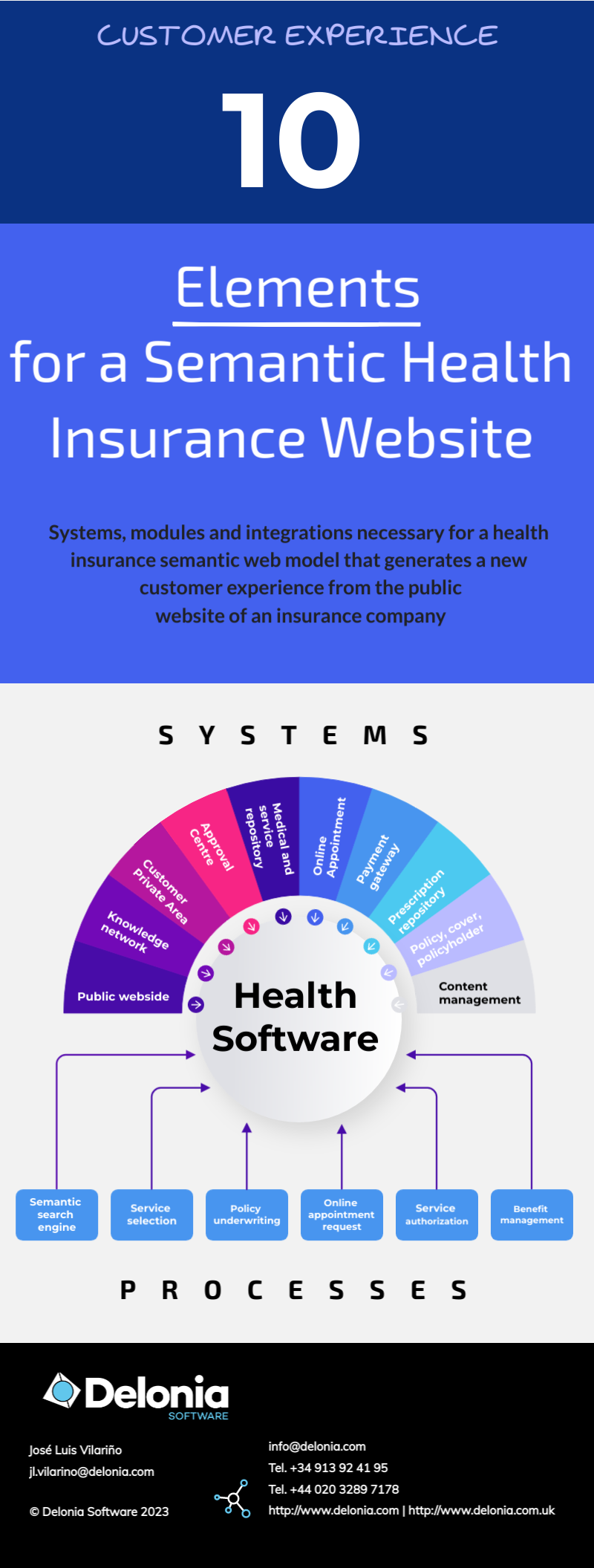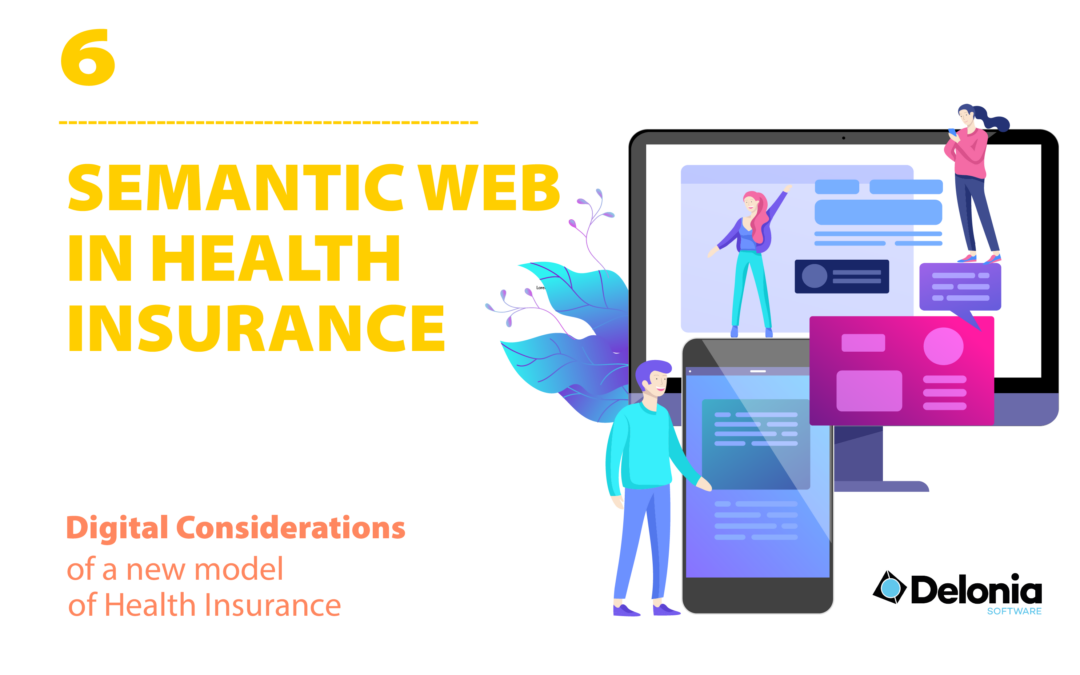1 Customer Experience in health insurance.
How many of a health insurer’s customers look for relevant clinical information about their health problems or concerns on their insurer’s website?
When we talk about web we can say mobile app, extending the service beyond a desktop. Incredibly, most health company websites have little or no content on pathologies or procedures, and in general, no relevant clinical information on the health of their policyholders. So the customer prefers to turn to Dr. Google rather than go to the company’s website. Then:
Would it be so far-fetched for the company to make available to its clients verified and reliable health content that could be of interest to its policyholders and avoid the dispersion and generality of global search engines on the Internet?
And once these contents are provided about a health problem. Wouldn’t it be reasonable for this same website to inform the insured of the services or products provided by that company related to the problem that is the object of the search?
Couldn’t it be possible to show which professionals in the Medical Directory are the most suitable specialists for that specific problem, so that we would know which one to go to, even proposing an online, face-to-face or video-consultation appointment?
Behind these questions lies a real need of healthcare customers that companies are not addressing. Policyholders have their health concerns, they look for information on the web and when they need assistance, they turn to the company’s different sources: they look for the appropriate health professional within the Medical List and check in their policy whether the service is covered, or they call the company to simplify the process, even if this makes them lose time.
Behind these questions lies a real need of healthcare customers that companies are not addressing.

The answer to this need is a health semantic web solution tailored to the needs of the company, its policyholders and potential customers. The system response would be different if the query is made in the public part of the company’s website or if the customer is in a private area where he/she has already been identified:
- If this consultation is made by the client or potential client in the public part of the website, generic products and coverages will be proposed, promoting their sale.
- If the customer is in your private area (prior registration), the contents and services should already be customized for your specific circumstances. We would already know which is your contracted product and your medical directory, as well as, the conditions of access to services, which are covered, co-payment or franchised, even if any limitation applies as exclusions agreed in the policy.
To generate a comprehensive customer experience that satisfies unmet demands, the company must implement a semantic health web solution tailored to the needs of the insurance company, its policyholders and potential customers.
2 Semantic Web Structure Health Insurance.
In a first approximation of the proposed solution, we could think of a simple structure with the following elements:
- Semantic search bar based on natural language processing (NLP) where the client exposes the problem he/she is interested in searching.
- A space to show truthful and certified clinical content related to the consultation, which may be videos, images or texts from internal or external providers to the company.
- A space to show the products that the company has available to hire related to or covering the topic of interest.
- A space to present the professionals in the medical directory who are specialized in that health problem and, of course, to propose the arrangement of a face-to-face On Line Appointment or, if preferred, a video-consultation.
The following flowchart details the general processes and high-level data structure involved:

A Semantic Health Web is an evolution of the web that has the ability to contain semantic and ontological information about its contents. This allows it to be interrogated for the meaning and relationships of its data. In addition, it facilitates its exploration through natural language (NLP) and when the contents are related to health – pathologies, procedures, services, among others – then we say that it is a Semantic Health Web.
3 Semantic Web Process Health Insurance.
A query made from the company’s public website, initiated in a generic Google-like search bar, triggers the following basic processes:
Process 1 – Semantic search engine
Assistant or pre-diagnosis that will determine the specialty, pathology and/or service that the user is looking for. It will present related content from verified public and/or private sources.
Process 2 – Service selection
Search and present clinical providers belonging to the company’s medical directory and related to the result of the previous step (Process 1), prioritizing according to corporate criteria. Displays data sheets, profiles, contents and service availability of these providers (COL, WS service information, e.g. emergency waiting time). Depending on whether or not the user is a client of the company, he/she may be referred to contract a policy (Process 3), or request service coverage (Process 4) after identification of the client and access to his/her Private Area.
Process 3 – Policy underwriting
When the user is not a client of the company, the on-line contracting sub-process (Front) and integration with a health CORE for policy issuance is initiated. It can include product wizard and price calculator.
Process 4 – Online Appointment Request
Management of an Online Appointment for a first consultation. The system presents agenda slots, authorizing and confirming the entry of the appointment in the customer’s and supplier’s agendas. There may or may not be prior authorization and confirmation by an authorizing center, including a payment gateway for co-payments or deductibles to be paid by the client.
A robust end-to-end solution requires the implementation of the following systems, developments, modules and integrations:
- Public Web
- Knowledge network
- Customer or user private area
- CORE Health and Authorizing Center
- Medical and Service Repository
- Online Appointment
- Payment gateway (credit card, Bizum, Paypal or any other that the company contemplates)
- Prescription Repository
- Policy, coverage, insured
- Content Management System
Although in this process we have described a query made by a user from the public website, the same dynamics would apply if we start from the prescription of a test or treatment that the insured client has pending to manage. In this case, you will also make your query from the search bar and you will be directed to the Front of the Prescription Repository. This topic will be developed in another article.

This is a first approach to a differential user experience, where the company focuses its interest in the concerns and health problems of its customers, to offer them the best information and services available. Digitizing this operation implies a real reduction in the bureaucracy and tedious telephone procedures that are still a hallmark of the sector. This new approach changes the image of the company vis-à-vis the insured, who can better perceive the added value it offers: an entity that collects bills but in return cares about their health and provides them with the services they need without hindrance.







